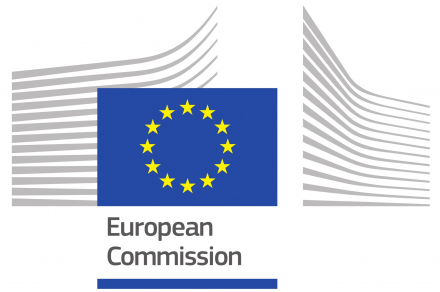GOVERNMENTS/ASSOCIATIONS/FASTENER GROUPS
EU Publishes Default Values for Determining Embedded Emissions in CBAM Transitional Period and Updated Guidance On Reporting Obligations


Add to my favorite
2024-02-07
On 22 December 2023, the EU Commission published the default values that can be used to determine embedded emissions in imported goods (except electricity) covered by Carbon Border Adjustment Mechanism (CBAM) during its transitional period which lasts until the end of 2025.
Default values play a specific role in CBAM implementation during the transitional period, in particular when importers do not have all the necessary information:
- During the three first quarterly reports (Q4 of 2023 and Q1&2 of 2024), declarants may report embedded emission based on default values made available and published by the European Commission without quantitative limit;
- From Q3 of 2024 and until the end of 2025, declarants can still report emissions based on estimations but only for complex goods and with a limit of 20% of the total embedded emissions. Using default values would qualify as ‘estimation’.
These default values will be revised regularly after the end of the first reporting period for Q4 of 2023 (submitted by 31 January 2024), to take into account data collected in that first reporting period as well as feedback from EU industry and from non-EU producers of CBAM goods.
Besides the flexibilities foreseen in the CBAM regulation and in its implementing regulation for the transitional period, additional simplifications or facilities have been integrated or will be integrated soon in the online dedicated reporting tool, the CBAM transitional registry. These include:
- An option for recording emission data of a specific good to be reused in subsequent reports (feasible from the second quarterly report in April 2024);
- An option for reconducting the previous report updating the imported quantities;
- An option for reporting data based on an XML file to allow reporting declarants to automatise their own process to reuse previous reports data whenever appropriate;
- Clarification that for operators, the default reporting period is twelve months to allow them to collect representative data that reflects an installation’s annual operations. The twelve-month reporting period may be either a calendar year or alternatively a fiscal year. However, operators may also choose an alternative reporting period of a least three months if the installation participates in an eligible MRV system and the reporting period coincides with the requirements of that MRV system.
The Commission will continue working on further simplifying reporting obligations and how to facilitate the submission of certain business data directly from the non-EU producers to the CBAM Registry before the second reporting period in 2024. The European Commission has also updated two written guidance documents to help importers and installation operators outside the EU to navigate the transitional period (1 October 2023 – 31 December 2025) with the reporting obligations.
The guidance documents are updated with clarifications and corrections especially for the timeline for the reporting periods, and quality of information in the CBAM reports e.g. information to be submitted for inward processing and production routes. The guidance documents are accompanied by an electronic template for information that may be used by installation operators to communicate information on the embedded emissions of their goods to the reporting declarants.
Background
CBAM is the EU's landmark tool to fight carbon leakage and one of the central pillars of the EU's ambitious Fit for 55 Agenda. CBAM has two goals: to contribute to the EU achieving its ambitious climate policies and to encourage industry worldwide to embrace greener technologies, particularly in countries with less ambitious green standards.
In its transitional phase, CBAM will only apply to imports of cement, iron and steel, aluminium, fertilisers, electricity and hydrogen. EU importers of those goods will have to report on the volume of their imports and the greenhouse gas (GHG) emissions embedded during their production, but without paying any financial adjustment at this stage.
The objective of the transitional period is to serve as a pilot and learning period for all stakeholders (importers, producers and authorities) and to collect useful information on embedded emissions to refine the methodology for the definitive period. In a report in mid-2025, the Commission will draw the lessons of the transitional period from that information to refine the mechanism’s scope and the methodologies for calculating embedded emissions before CBAM payments begin in 2026.
While importers are asked to collect data as of the fourth quarter of 2023, their first report will only have to be submitted by 31 January 2024 at the latest. These reports can be amended until 31 July 2024.
The Implementing Regulation on reporting requirements and methodology provides for some flexibility when it comes to the values used to calculate embedded emissions on imports during the transitional phase.
Until the end of 2024, companies will have the choice of reporting in three ways:
- full reporting according to the new methodology (EU method);
- reporting based on an equivalent method (three options) and
- reporting based on default reference values (only until July 2024, i.e for Q4 of 2023 and Q1&Q2 of 2024)
As of 1 January 2025, only the EU method will be accepted.
Download document:
歐盟
CBAM過渡期
嵌入式排放
碳排
預設值
報告義務指南
EU
CBAM Transitional Period
embedded emission
carbon emission
default value
Guidance On Reporting Obligations
扣件
國際展會
惠達雜誌
匯達實業
外銷媒合
廣告刊登
螺絲五金
五金工具
紧固件
台灣扣件展
印度新德里螺絲展
越南河內螺絲展
墨西哥瓜達拉哈拉螺絲展
美國拉斯維加斯螺絲暨機械設備展
波蘭克拉科夫螺絲展
義大利米蘭螺絲展
德國司徒加特螺絲展
wire Dusseldorf
FASTENER FAIR INDIA
FASTENER FAIR VIETNAM
FASTENER FAIR MEXICO
FASTENER POLAND
FASTENER FAIR ITALY
FASTENER FAIR GLOBAL
FASTENER WORLD
READ NEXT
GOVERNMENTS/ASSOCIATIONS/FASTENER GROUPS
2024-02-19

Subscribe







